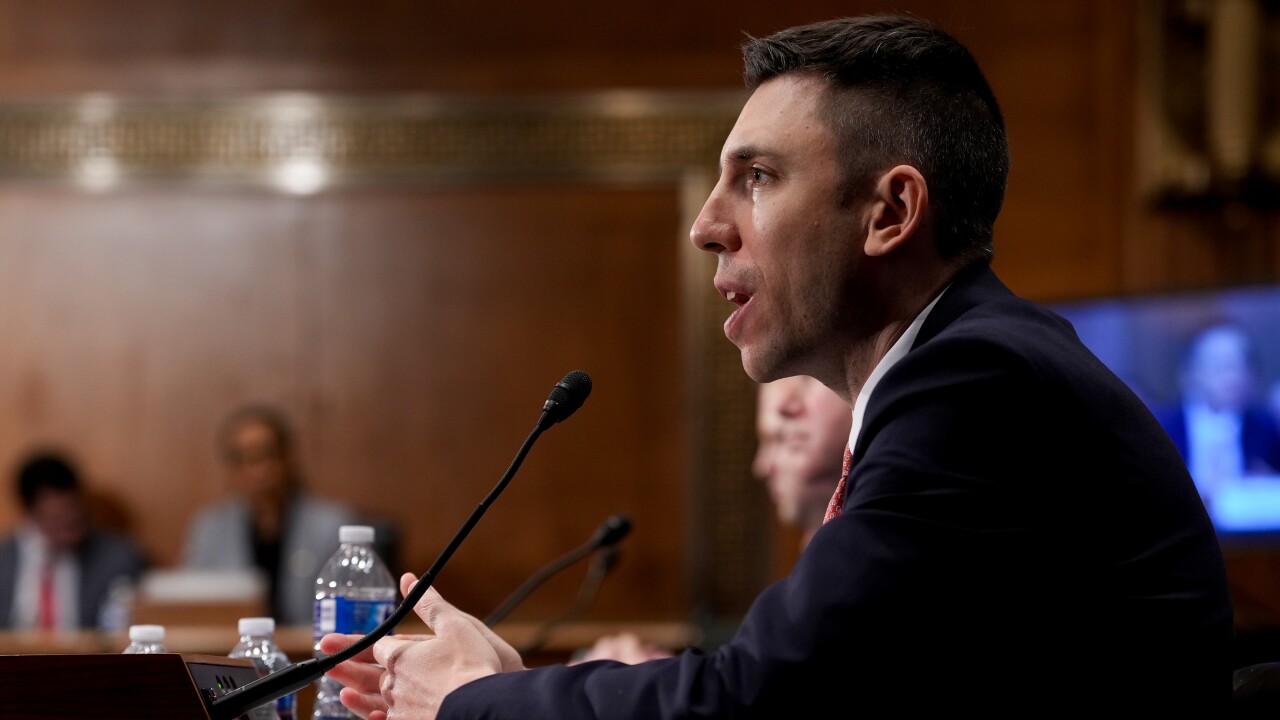One time-honored way to set interest rates on deposit accounts is to look down the street at the rate your top competitors are offering, then offer a point or two above or below that, depending on how much you need liquidity.
Another, more complicated and expensive but maybe more effective way that a handful of banks including Fifth Third are trying is an analytics-based approach. This takes into account factors such as the customers' past behavior, the demand curve (the point at which customers will leave for better rates), interest rates and the modeled forecasts of the effect of price changes on deposit flows, as well as competitors' prices.
Fifth Third has just begun piloting such a deposit pricing tool from Nomis Solutions, having observed banks in Canada, South Africa and Europe using the software.
The Cincinnati bank's goal: to deepen wallet share. "We don't just want them to buy more products for the sake of having more products," says Mark Erhardt, senior vice president - retail product management at the bank. "We want to be the customer's primary financial institution and solutions partner."
Pricing is often more art than science, he points out. "The art of it is, you can look at what your competitors are offering," he says. "You might put that information in spreadsheets so you can sort and trend it, but it's still largely art and there's not a lot of science behind it."
As it brings more science in, Fifth Third will analyze millions of records per month, looking at demand curves, interest rates, and deposit flows within households in reaction to product changes, aiming to find that ideal price point based on the volume of deposits it wants to gather and the maximum amount of interest expense it's willing to incur. Competitive data is fed in through a partnership Nomis has with MRI.
Some consumers are very price sensitive and will move large amounts of money for a small increase in interest rate. Other customers, even offered a large increase, don't move their money. The software provides a predictive score of customers' price sensitivity, based on factors like past transaction activity, credit bureau score, and household income.
"Understanding your customers' responses is part of that demand curve," Erhardt says. "You need Big Data tools to understand that; you can't do that with a spreadsheet when you have a large, multi-million customer base." The bank operates across 18 separate pricing regions in 12 states and has dozens of deposit products.
Industry-wide, the average bank has 30,000 different deposit product prices, according to Frank Rohde, president and CEO of Nomis Solutions. "One bank we know has two million prices." Some of this is due to state differences in pricing and the varying sizes of CDs.
Today many prices are near zero because rates are so low. "But that's on the cusp of tightening," Rohde says. "We're starting to see the bottom of that market. What happens in this new climate for deposits?"
Erhardt concurs. "We've been in this extremely low deposit interest rate environment now for several years," he says. "A lot of deposits have naturally flowed into customers' checking or low-rate savings accounts just as customers were recovering from the financial crisis and built up their reserve. In a lot of cases, customers haven't been motivated to move their money around because there's not a lot of places they can move it for a better return. But as rates start to rise, you'll see customers start to look around for better rates, and that will change the landscape significantly."
The bank will use the Nomis software to run what-if scenarios to forecast the results of planned rate changes.
"We may be in a situation where we want to keep our interest expense at a certain level and have it only grow at X% over the prior quarter," he says. "In another situation, where loan growth has picked up, we may need to get deposits at a certain level, even if we have to pay more for them."
The bank will allow a human override for preferred customers. For example, households with more than $100,000 in total deposited investment holdings already receive individualized service from a dedicated banker and investment advisor. "That's a group where the model may come up with a recommendation for lower rates, but we know that's a customer group in which we've invested in a long-term relationship and they should not have their rates lowered," Erhardt says. "It's still a relationship business so you can't have the models drive everything; you'd lose the nuance of the value of the relationship."
He recognizes the potential downside of completely analytics-driven decisions.
"You suddenly make a drastic change and reputations take a long time to recover," Erhardt observes. "That's where the judgment from leadership at the bank needs to come into play, despite what the models say."
The backdrop of the bank's higher-tech approach to deposit pricing is that it is pursuing a needs-based sales approach. "The idea is you need to sit down with the customer and have a conversation around their needs," Erhardt says. "Then you can start offering product." Bank staff have been trained to identify customers' needs and engage in a consultative sales process.
In internal analyses of household profitability, the bank has analyzed the retention benefits of customers' having more than one product at the bank.
"Customers that have a checking account with us, use us as their primary card and refinanced a mortgage with us have significantly higher retention rates than a customer that has just a single product with the bank," Erhardt says.
The bank began using relationship pricing in its products two years ago. Relationship pricing is meant to deepen wallet share by rewarding customers for bringing more of their business to the bank (investments, CDs, savings, checking).
"We've developed this set of relationship-based products that are built around our core checking account, and now we're adding in the insight we're getting from the Nomis pricing, which initially will be at the product and geographic level," Erhardt explains.
Longer term, the bank plans to further knit these two pieces together, and combine forecasts and suggestions from the Nomis pricing tool with the product recommendations made by the sales platform.





